Wastewater systems require routine maintenance and assessment. Yet completing visual inspections of many sewer assets — when accessible — requires dangerous confined space entry; in many cases, it’s impossible for human eyes to look directly on underground assets without digging up lines. Instead, personnel rely on specially designed cameras and equipment to assess the condition of otherwise out-of-sight operations. The equipment used depends on the utility’s needs and budget, but a range of modern technologies provide fast and efficient options for gathering information about a sewer pipe’s condition, while also increasing safety.
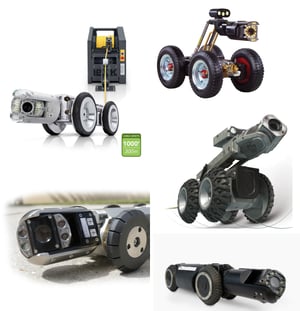 Sewer Crawler
Sewer Crawler
Pipe crawlers are mobile, remote-controlled devices fit with a light and camera system that can be driven through pipes to record video or take photos. With this method, an operator can drive the crawler through a pipe, making stops as needed to more closely analyze defects and gather detailed images using features like a pan/tilt or zoom camera.
Pipe crawlers come in a variety of sizes, and generally offer the ability to switch wheel sizes depending on the diameter of the pipe or obstacles they may encounter. Some crawler systems may be mounted in and operated out of a truck, but others are more portable. While most crawlers yield the same basic capabilities, some include more advanced features like focus and iris control, or side-scanning and laser profiling.
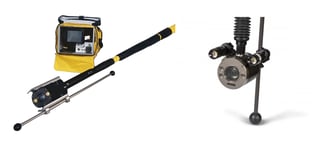
Pole Camera
As the name suggests, a pole camera consists of a camera with a light mounted on a pole, which operators lower into a manhole for a quick look into a sewer line. Pole cameras offer users a fast and cheap way to inspect sewer lines, though their capabilities are limited by their line of sight. Pole cameras can save operators from having to enter a manhole, and they can be used to view pipes that are too deteriorated for a crawler to drive through.
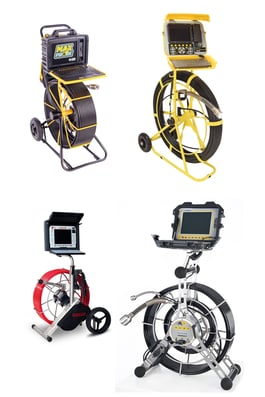
Push cameras are most often used for inspecting smaller lines like sewer laterals and drain pipes. A small camera head is attached to a long, sturdy cable, which can be fed into laterals or drain pipes to gather inspection footage.
Many push camera systems today come equipped with a computer screen for watching live footage. These systems are often used in extreme rugged conditions that a crawler cannot traverse and at angles that a pole camera cannot view, or for simpler, more rapid inspection projects.
Push cameras for pipes tend to be relatively inexpensive to acquire and operate. However, operators also have less control over the angle and quality of photos and video acquired than they do with a sewer inspection crawler. Push cameras come in various levels of sophistication and are used by a range of agencies, from small plumbing businesses to major metropolitan utility services.
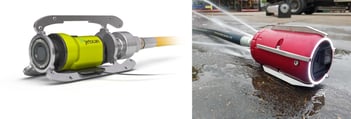
Video Nozzle
A video nozzle is a video camera attached to a sewer nozzle head used for cleaning pipes. Video nozzles let users clean and inspect a pipe simultaneously.
Operators can ensure they have properly cleaned a pipe by viewing inspection footage gathered from the video nozzle after running it through the pipe. This helps to ensure a complete cleaning and avoids wasting resources cleaning a pipe that doesn’t need it.
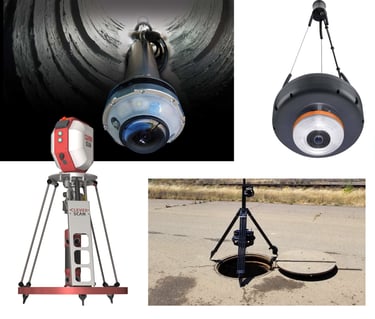
Manhole Scanner
Manhole inspection cameras are made specifically to access points for underground infrastructure, saving personnel a trip down into a confined space.
They come in an array of designs but generally send a camera vertically down the manhole to collect a side-scan image of the interior walls, looking for defects or signs of deterioration. Manhole scanning is considered a faster and safer way to assess condition than manual entry.
Whether it’s a remote-controlled crawler, or a camera on a pole, these inspection methods provide industry professionals with more data than ever before to build and maintain resilient wastewater systems for the future.
WinCan software is hardware-neutral and can be used to meet all of your inspection needs, regardless of choice of equipment or brand. 




